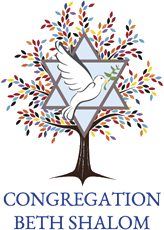Right in between Sukkot and Simchat Torah, sort of attached to both of them, is Shemini Atzeret, the 8th Assembly, or at least the 8th Something, since we are not totally sure what an ‘atzeret’ is. It is referred to as the ‘Holy Day after Sukkot’, after ‘Ha-Chag’, THE Holiday, since Sukkot is referred to as THE Holiday based on its significance.
However, there are four distinct differences between Shemini Atzeret and Sukkot. First of all, we no longer shake the lulav and etrog, which would imply that Sukkot is over. Second, although some communities share the tradition of eating meals in the Sukkah for one more day, we recite none of the Sukkot blessings. Third is the fact that we recite Yizkor in the synagogue, which marks it as different from Sukkot. And finally—and most significantly—we recite the prayer for rain (Geshem).
Our ancient scholars looked at the differences between Shemini Atzeret and Sukkot and attempted to figure out what the true meaning of Shemini Atzeret was. However, they ignored Halpern’s Rule #20: In Torah, things are beshert —you get what you are supposed to get.
What is the point, then, of Shemini Atzeret?
We are obliged to celebrate the Holidays. Everyone knows that. Holidays are special days—they are Holy. Thank you, God, for obliging us to remember the Exodus from Egypt, or the receiving of the Torah on Sinai, or celebrating the creation of the world on Rosh Hashanah.
But what are we obliged to do on the overwhelming number of other days that make up our lives? The Holy Days end, and our routine life resumes.
Each and every day of our lives needs to be celebrated, just like the Holy Days. Only, the Divine does not specifically tell us what to celebrate. That we must do for ourselves. The Non-Holy Days must be celebrated as fully as the Holy Days—or maybe even more so.
B’Shalom
Rabbi Stanley Halpern
